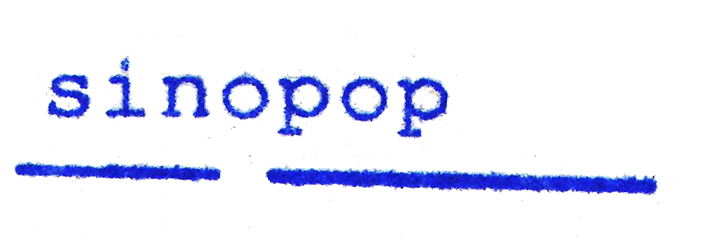The 30-Second Rule: Understanding Traditional Journalism Terminology
When you step into the world of journalism, you’ll hear about the 30-second rule—a principle that shapes how you present information and capture a reader’s attention. It’s more than just about talking fast; it’s a mindset rooted in the industry’s traditions. If you’re curious about why reporters end stories with mysterious symbols like "-30-" or wonder how newsrooms keep things clear and concise, you’ll want to see what comes next.
The Origins and Significance of -30- in Journalism
In journalism, the notation “-30-” is used to indicate the conclusion of a story. This practice originated in the 19th century during the telegraph era. Telegraphed messages were often marked with the number "30" to signify their completion, a method established by Western Union's 92 Code in 1859.
This shorthand was particularly useful for telegraph operators during the American Civil War, as it helped manage communication on busy telegraph lines while also minimizing the risk of miscommunication.
As time progressed, journalists adopted “-30-” not only for its historical significance but also for its role as a distinct signal within journalism. The use of this notation has created a sense of tradition among reporters and editors, serving as a recognizable marker in press releases and news articles that indicates the end of the narrative.
Its continued use underscores the connection between modern journalism and its historical roots in telegraphic communication.
Press Release Closings: Tradition Meets Modern Practice
A well-structured press release relies on clear communication, and standardized closings such as “-30-” serve an important function in this regard.
Originating from historical telegraph shorthand, “-30-” is a recognized marker within traditional journalism, indicating the end of the document to media outlets. Other common alternatives include “###,” “END,” and “XXX,” which offer flexibility while still adhering to the principle of efficiency.
The primary goal when selecting a closing format is to ensure clarity, preventing any potential confusion regarding the completeness of the message.
Employing established shorthand methods can enhance communication, contributing to a professional presentation that remains easily interpreted.
Such conventions help bridge modern practices with the historical foundations of journalism.
Clarity, Brevity, and the 30-Second Rule
Clarity is essential in journalism, allowing the audience to quickly grasp a story's core message.
When reporting news, prioritizing brevity ensures vital information remains prominent. The 30-second rule emphasizes delivering news concisely, providing necessary context to maintain audience engagement.
In an age of rapid information exchange, a clear structure allows audiences to absorb key points without feeling overwhelmed. Focusing on brevity aids in communicating facts effectively, fostering comprehension and trust.
Good journalists avoid burying the lead, consistently prioritizing clarity in their reporting.
Corrections, Integrity, and Trust in News Reporting
Corrections are an essential aspect of maintaining a newsroom's integrity and fostering public trust. Journalists have a duty to amend factual inaccuracies as part of their ethical obligations. When errors occur in reporting, making transparent corrections indicates a commitment to accuracy and honesty.
Readers are encouraged to report errors, and significant mistakes are accompanied by noticeable correction notices. The correction process typically involves verifying the mistake with responsible reporters and editors, and ensuring that corrections are published in all relevant formats where the error appeared, including articles, newsletters, and podcasts.
Timely corrections reflect a commitment to transparency and integrity, which are vital for sustaining audience trust.
Anonymous Sources and Their Role in Journalism
While newsrooms aim for transparency, there are instances where anonymous sources are essential for obtaining information vital for the public interest.
Journalists may utilize these sources to address sensitive topics or shed light on power dynamics that might otherwise go unreported. Senior editor approval is often required at news organizations, which helps maintain reliability and trust among readers.
It's important for journalists to thoroughly vet each source, as ethical considerations necessitate a careful balance between transparency and the protection of individuals who may face risks.
In the realm of investigative journalism, anonymous sources can transform vague information into significant stories; however, journalists must ensure the credibility of the information provided and uphold the public’s trust.
Essential Terms: A Glossary of Newsroom Jargon
A well-organized newsroom employs a standardized vocabulary to transform raw information into coherent narratives. Terms such as "blurb" refer to a brief author bio that establishes the writer's credibility at the beginning or end of an article.
Proper attribution is essential in every news report, as it enables news organizations to uphold accuracy and transparency. The term "nut graf" denotes a paragraph that succinctly summarizes the core essence of a story.
Exclusive stories provide a tactical advantage for news organizations over their competitors, while "churnalism" is a term used to describe the practice of repurposing press releases instead of generating original content.
Conclusion
By understanding the 30-second rule and traditional terms like "-30-," you’re equipped to better navigate the world of journalism. Always aim for clarity and brevity in your own communication—trust and integrity depend on it. Whether you’re writing, reading, or sharing news, sticking to these fundamentals helps you separate fact from noise. Remember, in journalism, every second counts and every word matters. Carry these principles forward—you’ll be a more informed and discerning media consumer.













